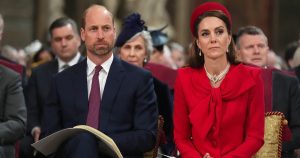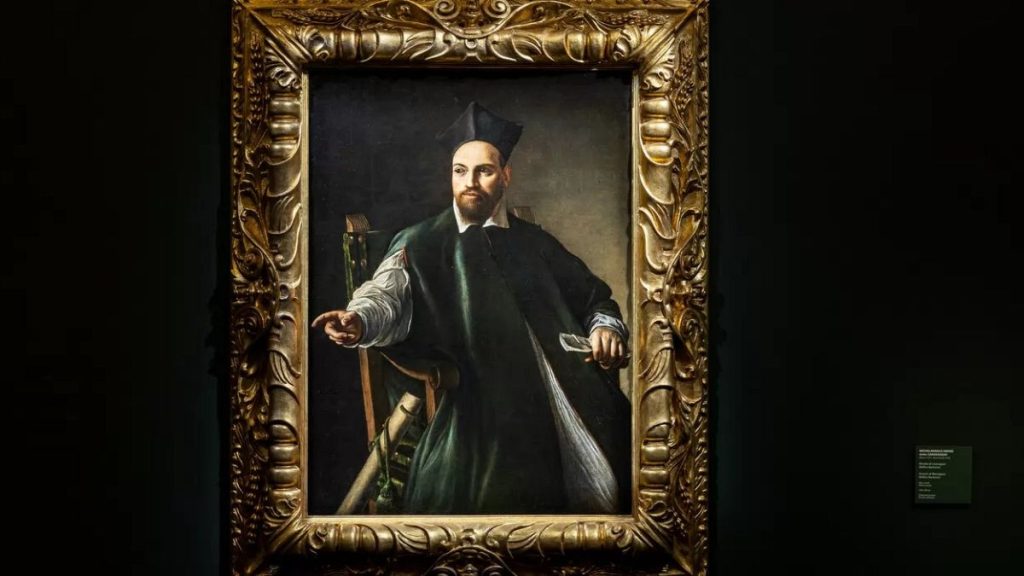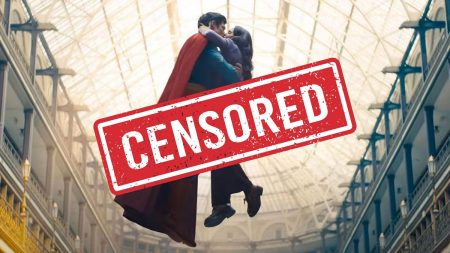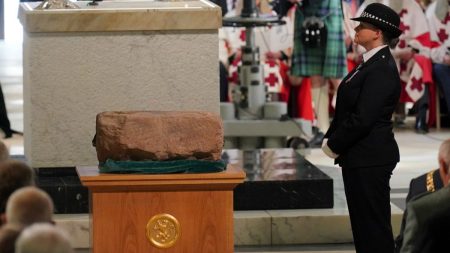A newly uncovered portrait by the esteemed Italian Baroque artist Caravaggio has made its debut at the Palazzo Barberini gallery in Rome, showcasing a significant piece of art history. Displayed to the public for the first time on November 23, the painting has remained in a private collection for over six decades. This portrait, believed to depict Monsignor Maffeo Barberini—who ascended to the papacy as Pope Urban VIII—provides a fascinating glimpse into the past as Urban was a pivotal patron of the arts during the 17th century. He supported various notable artists, including the eminent sculptor and architect Gian Lorenzo Bernini, underlining the interconnectedness of art and ecclesiastical authority during this period.
Curated by gallery director Thomas Clement Salomon and art historian Paola Nicita, the exhibition presents this work as part of a broader exploration of Caravaggio’s legacy. The portrait is dated to the turn of the 17th century, aligning with a period when Caravaggio was forging his unique artistic path. Initially attributed to Caravaggio in 1963, the painting is believed to have been housed within the Barberini family’s collection for centuries before transitioning to private ownership in the mid-1930s. Its public unveiling provides an opportunity for a wider audience to engage with Caravaggio’s artistry, especially given that portraits by the artist are notably scarce.
The historic significance of the portrait is further emphasized by art critic Roberto Longhi’s endorsement in 1963, as he confirmed its authenticity as a Caravaggio piece. The artist is renowned for his incredible use of chiaroscuro, a technique that employs contrasting light and shadow to create depth and vibrancy in his subjects. This particular painting stands out not only because of its artistic merit but also due to the rarity of Caravaggio’s portraits, many of which have been lost over the years or remain unaccounted for. As Nicita pointed out, the artwork’s prior visibility was limited, having been seen by only a handful of specialists since its recognition in the ’60s.
The title of the exhibition, “Caravaggio. The Portrait Unveiled,” aptly reflects the importance of this event as it allows the public a rare glimpse into the masterful work of Caravaggio. This unveiling serves as an event that encapsulates not just the unveiling of a portrait but also the broader cultural and historical discourse surrounding Caravaggio and his impact on the arts. Displaying at the National Gallery of Ancient Art in Rome until February 23, 2025, the portrait is positioned within a curated narrative that enables visitors to appreciate the intricate relationship between art, power, and patronage during the Baroque era.
In a world where artworks regularly emerge from obscurity, the exhibition invites art lovers and historians alike to explore the significance of Caravaggio’s output and the legacy he has left behind. The portrait’s display allows audiences to engage with the historical context of the sitter—Monsignor Barberini—while highlighting the profound influence of art on society at the time. Urban VIII’s reign as pope was marked by a flourishing of the arts, and this portrait acts as a tangible reminder of the synergies between religion and artistic creation.
Overall, the opportunity to view Caravaggio’s portrait in a public setting enriches the cultural landscape of Rome and serves as a celebration of Baroque art. With its combination of artistic excellence and historical intrigue, the painting is set to captivate visitors for the duration of its exhibition, fostering a deeper appreciation for the work of one of history’s most transformative artists. Through this event, Caravaggio’s significant contributions to the art world are not only recognized but revived, allowing a new generation to discover and engage with his profound and emotive works.














